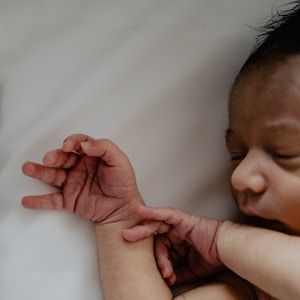Article
Biosimilar Ranibizumab Appears Effective in Treatment of Retinopathy of Prematurity
Author(s):
An analysis of 118 infant eyes in India suggests the biosimilar is safe and effective in treating ROP, with about one-third of eyes requiring reinjection at 7 weeks after the first dose.
Credit: Unsplash/Kelly Sikkema

A biosimilar ranibizumab (Razumab) appeared safe and effective in the treatment of infants with retinopathy of prematurity (ROP), with similar results to the innovator ranibizumab, according to new research.1
The retrospective study of 118 eyes with ROP showed that 20% of eyes progressed to complete vascularization, while 35% of developed recurrence of neovascularization and required reinjection at approximately 7 weeks post-injection. Data showed the remaining 45% of eyes did not develop recurrence but had not progressed to complete vascularization after 6 weeks, and required laser.
“Given the advantages of its cost-benefit as well as comparable efficacy, Razumab may be safety used in managing ROP by retina physicians globally,” wrote the investigative team. “With widespread use, more data would be available to corroborate our findings.”
Cost of anti-vascular endothelial growth factor (anti-VEGF) agents remains a major concern worldwide, with innovator ranibizumab being cost-prohibitive for many people in the developing world. A biosimilar molecule was introduced to India in 2015 and gained regulatory approval, and has been used extensively for most approved indications, including neovascular age-related macular degeneration (nAMD) and diabetic macular edema (DME). But Dr. Tanvi Choudhary, M and J Western Regional Institute of Ophthalmology, B J Medical College, indicates the use of the biosimilar has yet to be studied in ROP.
Choudhary and colleagues set out to evaluate the efficacy of biosimilar ranibizumab monotherapy in terms of ROP resolution, recurrence, and time to recurrence for the first time. Their retrospective study included infants with stage 3+ ROP either in zone 1 or zone 2 posterior or aggressive posterior ROP (APROP). Each eligible infant underwent intravitreal injection of biosimilar ranibizumab (0.25 mg/0.025 ml) monotherapy.
Investigators recorded baseline factors including gestational age at birth, birth weight, duration of oxygen administration and need for assisted ventilatory support, and the age at the time of biosimilar ranibizumab injection. Serial eye examinations were performed, and follow-up continued monthly until complete retinal revascularization was achieved.
As per protocol, retreatment with the biosimilar was done if recurrence of neovascularization was observed at any time point during follow-up. If vascularization was found to have not progressed or was >6 weeks after biosimilar injection, laser photocoagulation was done to the residual avascular retina.
The study included 118 eyes of 59 infants who received biosimilar ranibizumab during the study period, with a mean gestational age of 30 weeks and median birth weight of 1250 g. Upon analysis, at presentation, investigators found APROP in 28 eyes (24%) of 14 babies, while stage 3 disease was observed in zone 1 in another 28 eyes (24%) and the remaining 62 eyes (52%) had stage 3 ROP in zone 2 posterior region.
The analysis showed complete resolution of ROP in 22 eyes (19%) at a mean of 55 days after biosimilar ranibizumab injection, while 42 eyes (35%) showed a recurrence in neovascularization for which they received repeat injection at a median of 51 days post-injection. Moreover, the remaining 54 eyes (46%) showed no recurrence but did not develop complete vascularization and underwent rescue laser treatment at 39 ± 21 days after receiving the biosimilar injection.
Choudhary and colleagues noted the cumulative incidence of recurrence of neovascularization (21%; 95% CI, 14 - 29) peaked at 7 weeks and was significantly higher in eyes with APROP (43%; 95% CI, 27 - 63) compared to eyes without APROP (13.4%; 95% CI, 8 - 22; P <.001). After adjustment for other covariates, they found eyes with APROP had a 2.5-times higher risk of recurrence that needed reinjection compared to eyes without APROP at presentation. None of the infants included in the study died or experienced any notable systemic adverse events attributable to the drug, they added.
“Our results match outcomes from ROP treated with the innovator ranibizumab in terms of recurrence rates and timing of recurrence, indicating that the biosimilar Razumab may be performing well and has similar efficacy to the innovator molecule,” investigators wrote. “However, head-to-head comparative studies are necessary to prove this in the future.”
References
- Prajapati, Vipul; Choudhary, Tanvi; Chauhan, Wilhemina; Shah, Sonali; Handa, Ramya; Jahan, Bushra; Malviya, Sheetal; Sengupta, Sabyasachi1. Efficacy of a biosimilar ranibizumab monotherapy for the treatment of retinopathy of prematurity. Indian Journal of Ophthalmology 71(2):p 411-415, February 2023. | DOI: 10.4103/ijo.IJO_973_22





